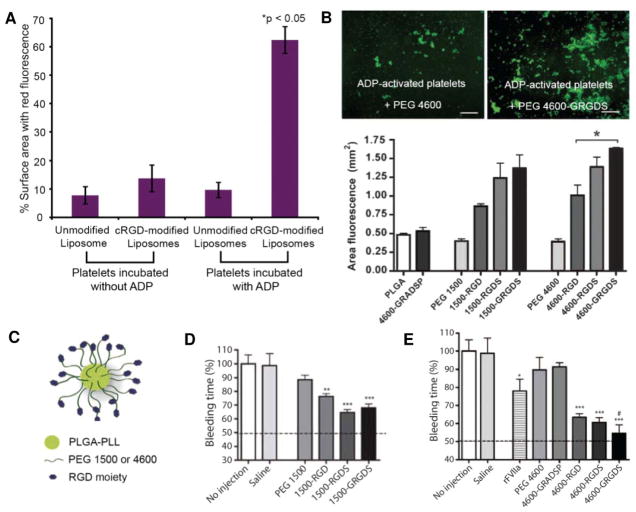Figure 4.
Data showing effects of ligand specificity and linker length on platelet aggregation and in vivo hemostatic function. Peptide modifications such as cyclization increase binding specificity of RGD moieties for activated platelets and specificity is confirmed in experiments such as that shown in (A), where inactive and ADP-activated fluorescently-labeled platelets are incubated with unmodified and cRGD-modified liposomes to confirm significant particle-induced aggregation in active platelets and minimal aggregation with inactive platelets [reproduced with permission from 38]. (B) In vitro comparison of platelet aggregation produced by incubation of fluorescently-labeled platelets with RGD versus flanked RGD peptides attached to 1500 or 4600 Da PEG. *P < 0.05 for comparison to PEG 4600 alone [reproduced with permission from 41]. (C) Schematic of PLGA-PLL-PEG-RGD nanoparticles [reproduced with permission from 41]. Bleeding times of rats intravenously injected with 20 mg/mL suspension of PLGA-PLL-PEG-RGD nanoparticles synthesized with (D) PEG 1500 and (E) PEG 4600 followed by injury to the femoral artery [reproduced with permission from 41]. (D) *P < 0.01, ***P < 0.001 for comparison to PEG 1500. (E) * P < 0.05, ***P < 0.001 for comparison to saline and #P < 0.05 for comparison to rFVIIa.

